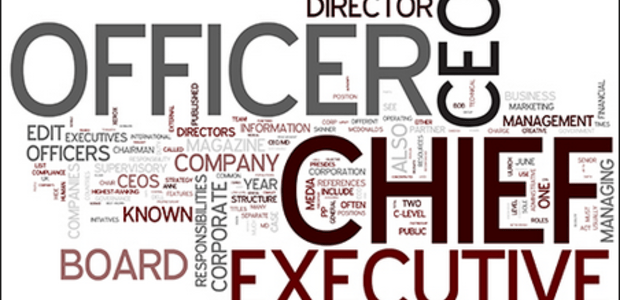advertisement
Changing roles inside the C-suite
We spend a whole lot of time in the IT world wondering about the future of the CIO role. It’s…

We spend a whole lot of time in the IT world wondering about the future of the CIO role. It’s a question of endless fascination, but we mustn’t forget that CIOs are not the only C in the C-suite.
And the fact is that the success of the CIO and the IT organization is very much a function of our relationship with those other executives. That means that if we want to get clues about the future of the CIO, it is incumbent upon us to be aware of the changing roles of the CEO, the CMO and the CFO.
Everything changes, even the CEO
No one is insulated from change. Two hundred years ago, the boss was the boss. The 1815 CEO was a “my-way-or-the-highway” whip-cracker (think Andrew Jackson and Napoleon). Fifty years ago, the CEO archetype achieved corporate objectives by architecting incentives (think Secretary of Defense Robert McNamara and his very quantitative approach to managing the Vietnam War). Today, many view the role of the modern CEO as a designer-in-chief of corporate culture with the objective being risk-savvy employees able to independently recognize problems and fix them.
I’m not saying that all CEOs have evolved in lockstep. Even today you can probably find more than a few Simon Legrees in corporate America. And to revert to the military example, World War II saw an early flowering of the empowering CEO. According to Paul Johnson, author of Eisenhower: A Life, when Dwight Eisenhower reported to Gen. Marshall at the War Department in December 1941, Marshall explained the role of a senior executive:
In direct opposition to McNamara’s management-by-the-numbers approach, modern CEOs create environments where employees can solve their own problems. They focus on inputs over outputs. Outputs are metrics like sales figures and market share. Inputs are ineffable things like creating an environment where employees feel both safe and motivated enough to fail when trying something new.
Peter Thiel, the co-founder of PayPal and author of Zero to One: Notes on Startups, or How to Build the Future, is an entrepreneur and hedge fund manager. In an interview with Tyler Cowen, author of Average is Over: Powering America Beyond the Age of the Great Stagnation,Thiel described his concept of the leader of the future:
According to the Wolff Olins’ Leadership Report 2015:
Gary Loveman, CEO at Caesar’s, believes the modern CEO’s role is to ask tough questions:
advertisement
The CMO confronts the customer
Because of the obvious importance of customers and the widespread embrace of top-of-the-house-initiated campaigns to become customer-centric, the CMO role is thought by many to be expanding. And in certain cases, it is. Andy Childs, CMO at Paychex, owns not only traditional marketing, but strategic planning and M&A as well. But such is the importance that customers have achieved that other corporate officers are getting involved in the quest to nurture them — including the CIO. Meanwhile, there are indications that the status — the “executiveness” — of the CMO is declining. As reported in TheWall Street Journal, a recent Korn Ferry survey found that 34% of respondents said they think their CMO could be a likely CEO candidate. But when the same question was posed two years ago, 54% of respondents said they thought their CMO was poised for the company’s top job.
CMOs have always been in danger of self-limiting by focusing too narrowly on marketing and promotion. The danger of that is more acute than ever. Some career watchers advocate that today’s CMOs must own the entire customer experience and represent the customer’s perspective in corporate strategy. But in 2015, only 22% of CMOs focus on customer retention as a top priority, according to Cliff Condon of Forrester. If CMOs continue to underperform in this area, CIOs should be prepared to step into the breach.
The CFO and the power of no
Believe it not, the CFO role is not ancient. Indeed, fewer than 10 per cent of the major companies in the U.S. had CFOs before 1978 — compared to 80 per cent or more each year after 2000. At its inception, the CFO job was pretty straightforward: to ensure the integrity and control of financial information, to interface with capital markets, and to measure and report business results.
Today, the CFO has to be a catalyst for change, helping companies focus on the capabilities that drive value. “It’s more of a leadership role,” says Philip Rewcastle, CFO of the Consumer Lending Group at Wells Fargo, “versus the support role it was 10 years ago.”
Some things don’t change. Many think the CFO’s most powerful weapon is the word “no.” A joke told around Mahogany Row: How do you know your CFO is becoming more tolerant? He lets Marketing present its entire budget before saying no.
This is not totally fair. It is essential that someone be in a position to say no to the many proposals of marginal benefit so that the few of real promise have the resources needed to thrive. Where CFOs are evolving, they are empowering and educating others in the organization about the power of no, so that many people are able to ask the right questions and provide the right insights that lead to an understanding of when to say no and when to say yes.
As these roles continue to change, it will affect how the CEO, the CMO and the CFO interact and coexist with the CIO. For that reason, we need to be paying attention.